I'm a Barbie girl, in a Barbie world. Life is plastic. It's fantastic!"
Twenty years ago, Lin Ah-ching (
From 1967 to 1987, Taishan was home to the flagship factory of Mattel Ltd, producing Barbie dolls for the world. Each day the factory produced 50,000 to 60,000 doll heads. Lin was one of the 8,000 workers who worked in this small semi-industrial township.
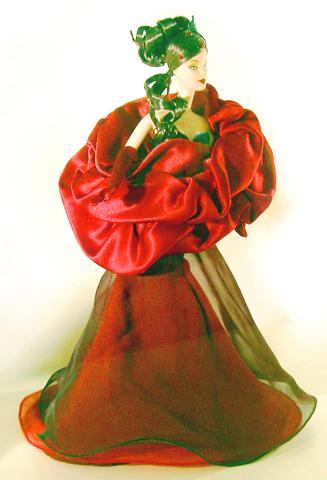
PHOTO: YU SEN-LUN, TAIPEI TIMES
Following the opening of Taiwan's first Doll Museum last month, the little-known past of Taishan has come into the spotlight again.
"Look, this part of her body is made by the revolving machine. And for the hair, we had to sew the hair circles then use ovens to make [the hair] curl," Lin said, pointing to a doll in the museum and recounting her 20 years of making Barbies.
Lin said she originally worked in a clothing factory in Taoyuan and in 1967, Mattel set up and she moved to Taishan to become one of the earliest employees in the factory.
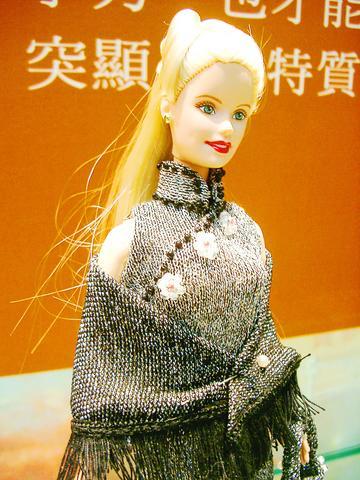
The business soon took off and peaked in the 1980s. The factory was divided into many departments that included body-shaping, spray-painting, hair-implants and sewing.
"For example,
Barbie's eyes, eyebrows, cheeks and lips, and also Ken's hair, are all made by spray paint," Lin said.
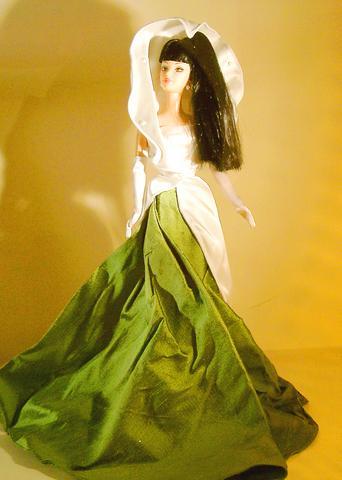
Teng Cheng-ming (
Mattel in Taiwan was a joint venture between Mattel and Hua-hsia Plastic (
"In the beginning, it was very primitive. There was no machine for us to curl the hair. We had to use chopsticks and wire to roll up the hair and use rice cookers to steam it. But you could not steam too much or it would damage and blur the paint for the doll's eyes," Lin said.
The factory became so busy, the work needed to be contracted out to workers outside of the factory. Thousands of housewives took up the piece-work jobs, doing knots, sewing buttons and laces, or putting on little shoes and earrings for the dolls.
Ku Tsuei-eh (
Ku said she if worked hard, she earned NT$360 a day. At that time, Lin Ah-ching's salary was NT$700 a month. A Barbie doll, however, cost NT$1,200. In today's NT dollars, that works out to more than the price of a Louis Vuitton bag.
Factory community
It was, therefore, common for the employees to take home a Barbie doll. "People would think you were weird if you didn't take one home," Lin said.
Some would hide the doll in their bell-bottomed pants. Others took hands and legs in their underwear to assemble at home.
This made the company hire security. "Whenever security showed up, workers would give signals to each other and some had to throw away the dolls out into the rice fields. Sometimes they threw them into people's houses," Ku said.
Of course, workers caught carrying a doll home were sacked immediately. Generally, according to Teng, also a labor-union member at Mattel, the company treated its employees fairly well.
"The company put in plenty of employee-welfare funds. We ate well and had parties in the factory. It was like a big family. We dated the girls and got married here," said Teng, whose wife was also a Mattel employee.
In 1984, employees were informed that the factory would move its operations to Indonesia and China and the factory closed in 1987. There were no disputes or fights from the labor side, as the union negotiated a severance fee with the management.
Each worker was paid between NT$100,000 and NT$200,000. But the local economy suffered.
Ku Tsuei-eh now serves in the Taishan Township Office and Community Rebuilding Team. He was one of those behind the setting up of the doll museum. The museum now displays 400 differently clad Barbie dolls, as well as antiques and photos of the history of Mattel in Taiwan.
"The doll-making was a major part of Taishan Township. So we want to restore doll-making culture in this town," Ku said.
In the past five years of preparing the doll museum, the team set up workshops for Taishan residents to learn designing and making clothes for Barbie dolls. The workshop also invited old employees, such as Lin and Teng, to talk about their experiences.
Recounting her days at Mattel, Lin Ah-ching feels that living in Barbie's world was accidental but nice.
"It was all about making a living. I was never a big fan of dolls and I never had the luxury of collecting them. But I know how to make a perfect doll," she said.
For your information :
Taishan Doll Museum: 26, Lane 26 Fengchiang Road, Taishan, Taipei County (
Telephone: (02) 8531 1406
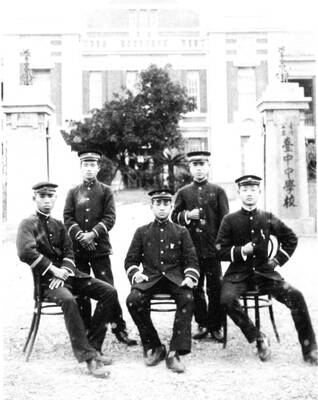
April 28 to May 4 During the Japanese colonial era, a city’s “first” high school typically served Japanese students, while Taiwanese attended the “second” high school. Only in Taichung was this reversed. That’s because when Taichung First High School opened its doors on May 1, 1915 to serve Taiwanese students who were previously barred from secondary education, it was the only high school in town. Former principal Hideo Azukisawa threatened to quit when the government in 1922 attempted to transfer the “first” designation to a new local high school for Japanese students, leading to this unusual situation. Prior to the Taichung First

The Ministry of Education last month proposed a nationwide ban on mobile devices in schools, aiming to curb concerns over student phone addiction. Under the revised regulation, which will take effect in August, teachers and schools will be required to collect mobile devices — including phones, laptops and wearables devices — for safekeeping during school hours, unless they are being used for educational purposes. For Chang Fong-ching (張鳳琴), the ban will have a positive impact. “It’s a good move,” says the professor in the department of

On April 17, Chinese Nationalist Party (KMT) Chairman Eric Chu (朱立倫) launched a bold campaign to revive and revitalize the KMT base by calling for an impromptu rally at the Taipei prosecutor’s offices to protest recent arrests of KMT recall campaigners over allegations of forgery and fraud involving signatures of dead voters. The protest had no time to apply for permits and was illegal, but that played into the sense of opposition grievance at alleged weaponization of the judiciary by the Democratic Progressive Party (DPP) to “annihilate” the opposition parties. Blamed for faltering recall campaigns and faced with a KMT chair
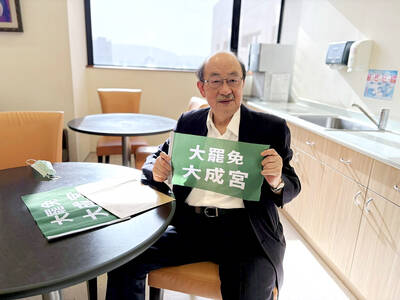
Article 2 of the Additional Articles of the Constitution of the Republic of China (中華民國憲法增修條文) stipulates that upon a vote of no confidence in the premier, the president can dissolve the legislature within 10 days. If the legislature is dissolved, a new legislative election must be held within 60 days, and the legislators’ terms will then be reckoned from that election. Two weeks ago Taipei Mayor Chiang Wan-an (蔣萬安) of the Chinese Nationalist Party (KMT) proposed that the legislature hold a vote of no confidence in the premier and dare the president to dissolve the legislature. The legislature is currently controlled